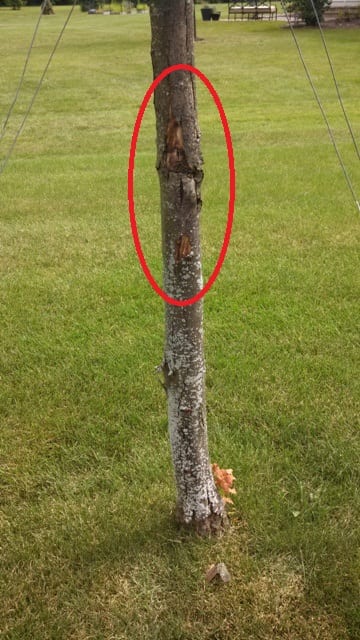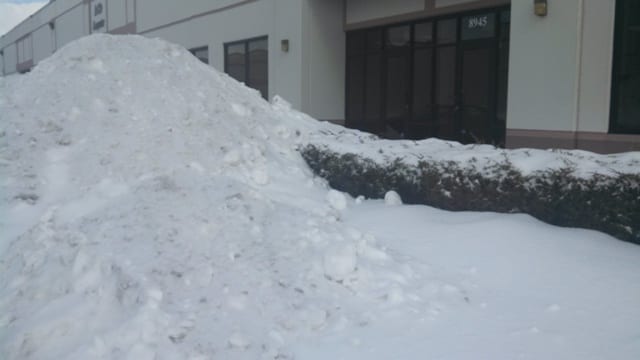Winter Injury On Landscape Ornamentals
This has been a cold and challenging winter for people in the Midwest, but what does this mean for our landscapes? Winter injury is a commonly overlooked issue when it comes to landscape maintenance, but it can be the all too common killer throughout the season. Some causes may include : wind, snow, extreme temperatures, sun exposure and low soil temps. These are the issues that Mother Nature brings to the table, but what about the plant itself? Plant location, genetics and establishment are also key factors to winter survival. The main types of winter injury to look for this season will be: branch, stem and bud damage, frozen roots, sun and wind scald on leaves, needles, and bark, bark splitting, and leaf roll or drop.

Bark splitting due to sun scald on red maple
Branch breakage can be easily seen, but death due to cold temps may require a closer look. Scratch the bark with your fingernail or a knife to check for green tissue on young branches and buds. Wait until trees and shrubs leaf out before pruning away the dead. Frozen roots are much more difficult to diagnose, a thinning canopy throughout the growing season and early fall leaf color will be a good clue that there is root damage. Proper mulching around trees and landscape beds will reduce root death due to freezing soils, usually 2 inches of total mulch is sufficient. Sun and wind scald affect evergreens causing needle discoloration or leaf rolling and can be very apparent on white pines, spruces and rhododendrons. Leaf roll occurs to help protect the leaf from being further desiccated. On evergreens an application of an antidessicant such as Transfilm is good protection for plantings in exposed areas. Bark splitting on new transplants and/or young trees is more common on sun and wind scald and bark splitting usually occur on the west or southwest facing portion of trunk. When temperatures are at or near freezing and the sun is shining, exposed plant material will warm significantly, only to freeze quickly when the sun sets. The change from a warm surface to freezing causes a very quick expansion then shrinking of plant cells and usually results in cell death on a large scale causing cankers or cracks on bark and scorch symptoms on leaves. To help prevent bark cracking, place light colored tree wraps on new plantings and young trees in the fall and remember to remove them in the spring. Some of these symptoms can be apparent immediately during the spring but others may take all season or even next year to completely show up.
There are plenty of preventative solutions to use to prepare the landscape for next winter. Good fertility and proper pruning are the key component in preparing landscape plants for winter. Products such as Root Guard and Bio 12-6-6 are great fall fertilizers. A properly timed fertilizer application, after the first hard frost in the fall or in the spring before new growth begins, provides the best plant health benefits.

Juniper hedge row covered in plowed snow
Before spring arrives, I encourage you to step outside and look up and around at you and your customers landscapes. Are there broken branches in tree canopies? Is there a very large, heavy pile of snow where a hedge row should be? Do you notice any bark cracking on the trunks of young deciduous trees? Answers to these questions could help you during clean up this spring and if unexpected plant death occurs later in the season.
Bridget Francis
Warehouse Manager







